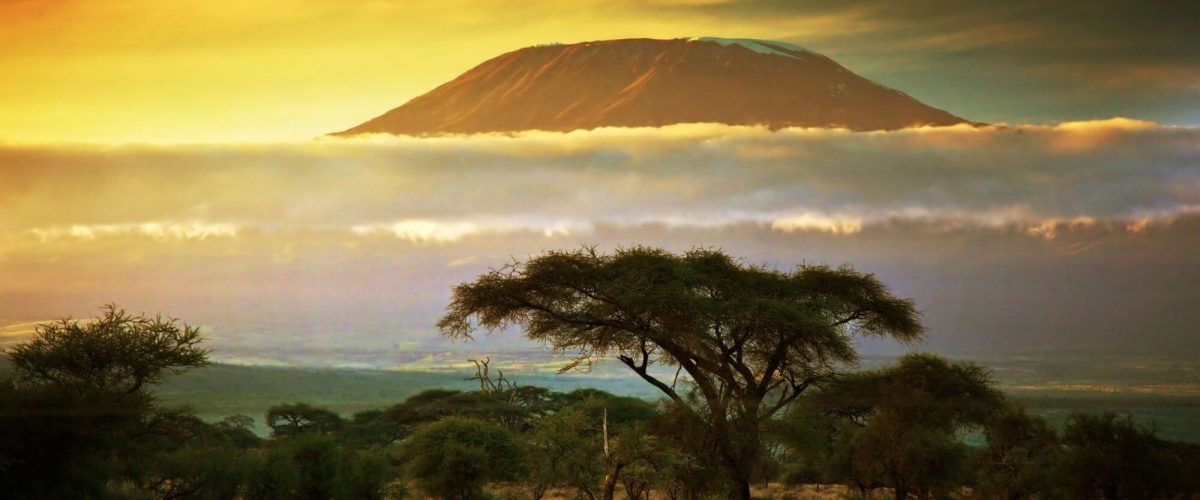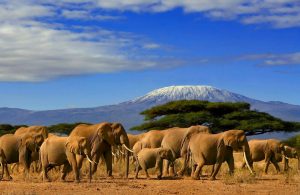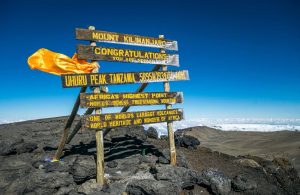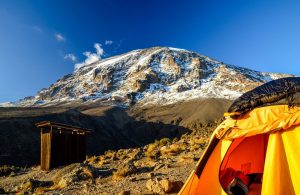Kilimanjaro is a tough hike, no matter how you look at it. There is no technical mountaineering involved in summiting this mountain. Porters will help carry gear and guides will lead you, but be prepared to hike three to eight hours each day for up to 11 days. You will likely spend more than 16 hours on your feet on summit day.
The 19,340-foot peak still draws thousands of climbers each year for good reason. Since the first successful summit of Kilimanjaro in 1889, it’s been top of adventurers’ bucket lists, and its near-equatorial location means it’s accessible year-round. If you’d like to join their ranks, you’ll need to plan to make sure you’re at your best. Here are the steps you need to take to get started.
Ensure Your Health & Fitness Is In Top Shape
Get in Shape
Being physically fit is imperative to successfully completing the hike up Kilimanjaro. Get your body ready for the trek by doing cardio exercises such as hill running, cycling long distances at high resistance, and walking.
Get Your Body Acclimatized To High Altitudes
If you have symptoms like nausea and headaches, ask for any medications that help you climb and acclimatize quickly to the mountain’s altitude. A longer climb will increase your chances of successfully adjusting to thin air if you’re new to altitude. Most tours include extra days to acclimatize.
Decide When Would Be The Best Time To Climb
The tropical climate of Kilimanjaro means that you can climb it whenever you want to. Try to avoid the rainy season between March and May as well as December. If these are the only months you can manage to go, fret not! During these months it is still possible to hike the trails even though it may be a bit slippery.
Consider How You’ll Get There
It is common for climbers to begin their journeys from Tanzanian base towns such as Moshi, Marangu, and Arusha. Typically, travelers arrive in Arusha through Nairobi or Dar es Salaam, which serve as regional hubs. As such transfers by car between Arusha and Moshi and Marangu can be prearranged.
Know What To Pack
Different ecological zones on the mountain bring variable weather conditions, such as tropical showers and piercing winds, so layering is essential. You can find complete, printable packing lists across the web. But as you begin to plan, there are a few things you should keep in mind.
Consider The Weight Limits
By law, your porter is only allowed to carry gear weighing 32 pounds. Therefore, you should pack appropriately and stay at a hotel with storage space to store extra clothing and luggage.
Pack Your Essentials In An Overnight Bag
Pack your day bag with items like money, layers, medication, sunscreen, water, transit tickets, camera, and passport for your porter to haul to each campsite. Getting a rain cover or a waterproof pack is essential when the weather changes quickly. Ideally, we recommend a daypack with built-in hydration in a medium-size (approximately 25 to 35 liters).
It is recommended that you bring a 95-liter overnight bag. It should be made of durable waterproof material and fit a luggage lock. To keep your gear and clothes dry, stuff them in a trash bag or two before putting them in your duffel.
What to Look for When Choosing a Guide
Kilimanjaro cannot be hiked without a guide. In addition to it being illegal, there are lots of good reasons to go guided. You can rely on them for route and weather knowledge, altitude acclimation experience, porter arrangements, and even meals.
The most affordable and easiest way to travel is by joining a group. For novice to intermediate climbers, longer trips that include acclimatization days are the best option. The prices will vary based on the length of the hike, and the features included.
Pick the Route That Works Best For You
There are three main routes to the summit, although there are plenty of technical ascents. Having trouble deciding which path to take? Each popular Kilimanjaro route has pros and cons we’ve compiled here.
The Lemosho Route (Our Recommended Route)
Elevation Gain: 12,340 feet
Miles: 47.5 round trip
General Trip Length: 7 – 11 days (average 9 days)
Kilimanjaro’s Lemosho route, which passes through six distinct ecological zones, is one of the newest, longest, and most scenic routes.
The Marangu Route
Elevation Gain: 13,340 feet
Miles: 48.2 round trip
General Trip Length: 5 to 10 days
There is only one route that offers accommodations at the summit of Kilimanjaro from where you can view Kilimanjaro National Park – the Marangu route, which is the shortest and most comfortable.
The Rongai Route
Elevation Gain: 12,940 feet
Miles: 45 round trip
General Trip Length: 5 to 10 days
If you want a less-trodden hike, head up Rongai, which winds through forests, moorlands, alpine desert, and beautiful arctic zones.
Get Most The Prep Done For You With A Private Guide Package
Purchasing a private guide package can significantly lessen the amount of prep work required for your Killimanjaro climb. The majority of packages will come with a complete itinerary, a selected guide, a hotel stay, and even transportation included.
We have partnered with Scenic Trail Ventures Ltd to allow you the opportunity to land the best price possible for a 2 Person 9 days Kilimanjaro Private Climb on the Lemosho Route. The Lemosho Route offers a high summit success rate, low crowds, and beautiful scenery to climb Mount Kilimanjaro.
Taking the western approach, the climb begins at the Londorossi Gate, at an altitude of 2360 meters. There is often a chance to see some of the region’s most unusual wildlife while going through the rainforest. Continuing, the route leads to Shira Ridge, the mountain’s third summit.
Then on day three, you will reach Shira camp on the main Machame route after crossing the famed Shira plateau and seeing the spectacular Shira Cathedral. After a few quiet days of climbing and admiring some breathtaking scenery, the more popular summit route can be taken. In lieu of retracing your steps along the summit route, you will descend along the Mweka trail.
Click HERE To Check Out The Full Itinerary, Trip Inclusions, And To Get In On The Auction!






